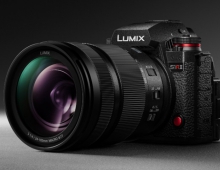
Panasonic Develops High-Capacity Lithium-Ion Battery Cells For Laptops and Electric Vehicles
Panasonic has developed two new 18650-type (18 mm in diameter, 65 mm in height) high-capacity lithium-ion battery cells for use in laptop computers and environmentally-friendly energy technologies.
The company boosted the capacity of 18650-type battery cells, which are widely used in laptops, by improving electrode materials. The newly-developed high-capacity 3.4 Ah and 4.0 Ah lithium-ion battery cells have an improved nickel based positive electrode, and the 4.0 Ah cell uses a silicon based alloy for the negative electrode instead of carbon.
The two battery cells extend operating time of laptop computers but also power electric vehicles when assembled in a module. Panasonic is currently testing a battery module that is constructed from many pieces of 18650-type battery cells. When used for the module, the new battery cells can also serve as a high-energy storage system for clean energy technologies including household photovoltaic systems and fuel cells.
Lithium-ion battery cells have become indispensable as a power source for cordless equipment, such as laptops, that supports a ubiquitous society. As cordless devices become more sophisticated and powerful, they require more robust battery cells.
With the new battery cells, Panasonic employed its high capacity nickel based positive electrode technology as well as its material and processing technology which prevents deformation of the alloy-based negative electrode when subjected to repeated charge and discharge.
By improving the positive electrode, Panasonic has achieved the 3.4 Ah cell which offers 20 percent greater capacity than the current 2.9 Ah model. The 3.4 Ah cell will be mass produced in fiscal 2012 ending in March 2012. The 4.0 Ah cell, which has 30 percent greater capacity compared to the 2.9 Ah cell, uses a next generation electrode material, a silicon based alloy for the negative electrode, substituting carbon. The 4.0 Ah cell will be mass produced in fiscal 2013 ending in March 2013. These high-capacity battery cells can make high-energy battery modules.
Direct Methanol Fuel Cell System
 Panasonic has also developed a direct methanol fuel cell system which can produce an average power output of 20 W by increasing the output per cubic centimeter twice that of its previous prototype. Using this technology, Panasonic aims to develop a 100 W-class portable generator and start field testing in fiscal 2012 ending in March 2012.
Panasonic has also developed a direct methanol fuel cell system which can produce an average power output of 20 W by increasing the output per cubic centimeter twice that of its previous prototype. Using this technology, Panasonic aims to develop a 100 W-class portable generator and start field testing in fiscal 2012 ending in March 2012.
In 2008 Panasonic developed compact fuel cell stacks by reviewing the structure of its connecting parts. It also developed compact and energy-efficient balance of plant (BOP) systems including a fuel supply pump that can directly mix and adjust the concentration of methanol internally. By improving the stack technology, Panasonic has successfully doubled the average power output to 20 W while retaining the same volume with the preceding prototype. The high output methanol fuel cell allows for powering feature-laden laptop computers, which have relatively high power consumption.
The new fuel cell system also boasts 5,000 hours of durability (based on eight-hour intermittent use per day). Durability was a major challenge for commercialization of fuel cells because power output drops as the electrodes deteriorate. Panasonic solved the problem by developing a technology that enables supplying high concentration fuel to the electrode.
As a next step, Panasonic plans to develop a portable generator with an average output of 100 W that will be much more compact than engine-generators.
The two battery cells extend operating time of laptop computers but also power electric vehicles when assembled in a module. Panasonic is currently testing a battery module that is constructed from many pieces of 18650-type battery cells. When used for the module, the new battery cells can also serve as a high-energy storage system for clean energy technologies including household photovoltaic systems and fuel cells.
Lithium-ion battery cells have become indispensable as a power source for cordless equipment, such as laptops, that supports a ubiquitous society. As cordless devices become more sophisticated and powerful, they require more robust battery cells.
With the new battery cells, Panasonic employed its high capacity nickel based positive electrode technology as well as its material and processing technology which prevents deformation of the alloy-based negative electrode when subjected to repeated charge and discharge.
By improving the positive electrode, Panasonic has achieved the 3.4 Ah cell which offers 20 percent greater capacity than the current 2.9 Ah model. The 3.4 Ah cell will be mass produced in fiscal 2012 ending in March 2012. The 4.0 Ah cell, which has 30 percent greater capacity compared to the 2.9 Ah cell, uses a next generation electrode material, a silicon based alloy for the negative electrode, substituting carbon. The 4.0 Ah cell will be mass produced in fiscal 2013 ending in March 2013. These high-capacity battery cells can make high-energy battery modules.
Direct Methanol Fuel Cell System
 Panasonic has also developed a direct methanol fuel cell system which can produce an average power output of 20 W by increasing the output per cubic centimeter twice that of its previous prototype. Using this technology, Panasonic aims to develop a 100 W-class portable generator and start field testing in fiscal 2012 ending in March 2012.
Panasonic has also developed a direct methanol fuel cell system which can produce an average power output of 20 W by increasing the output per cubic centimeter twice that of its previous prototype. Using this technology, Panasonic aims to develop a 100 W-class portable generator and start field testing in fiscal 2012 ending in March 2012.
In 2008 Panasonic developed compact fuel cell stacks by reviewing the structure of its connecting parts. It also developed compact and energy-efficient balance of plant (BOP) systems including a fuel supply pump that can directly mix and adjust the concentration of methanol internally. By improving the stack technology, Panasonic has successfully doubled the average power output to 20 W while retaining the same volume with the preceding prototype. The high output methanol fuel cell allows for powering feature-laden laptop computers, which have relatively high power consumption.
The new fuel cell system also boasts 5,000 hours of durability (based on eight-hour intermittent use per day). Durability was a major challenge for commercialization of fuel cells because power output drops as the electrodes deteriorate. Panasonic solved the problem by developing a technology that enables supplying high concentration fuel to the electrode.
As a next step, Panasonic plans to develop a portable generator with an average output of 100 W that will be much more compact than engine-generators.





















